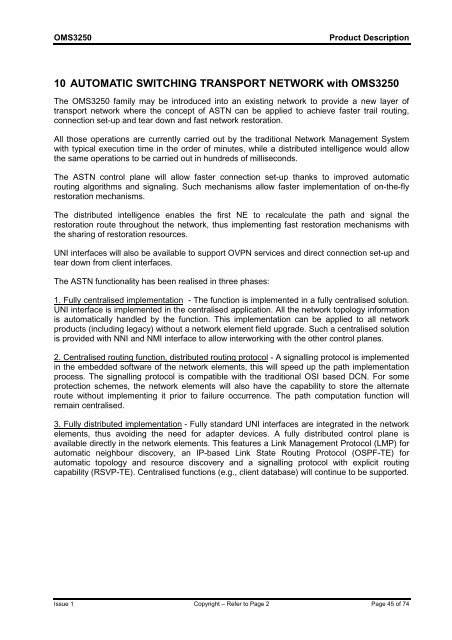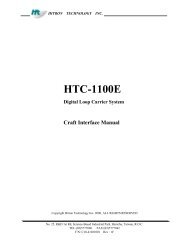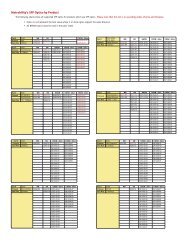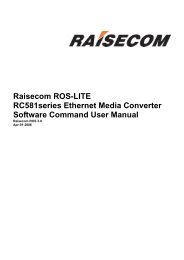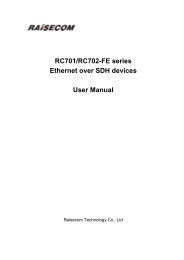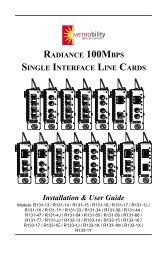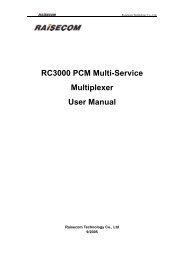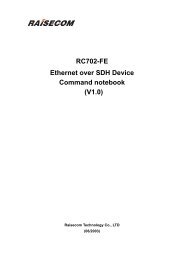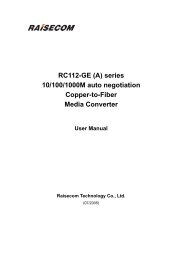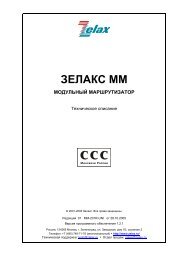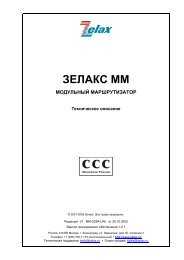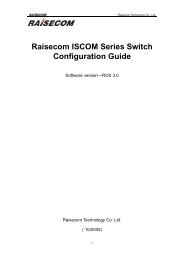OMS 3250
OMS 3250
OMS 3250
- No tags were found...
Create successful ePaper yourself
Turn your PDF publications into a flip-book with our unique Google optimized e-Paper software.
<strong>OMS</strong><strong>3250</strong>Product Description10 AUTOMATIC SWITCHING TRANSPORT NETWORK with <strong>OMS</strong><strong>3250</strong>The <strong>OMS</strong><strong>3250</strong> family may be introduced into an existing network to provide a new layer oftransport network where the concept of ASTN can be applied to achieve faster trail routing,connection set-up and tear down and fast network restoration.All those operations are currently carried out by the traditional Network Management Systemwith typical execution time in the order of minutes, while a distributed intelligence would allowthe same operations to be carried out in hundreds of milliseconds.The ASTN control plane will allow faster connection set-up thanks to improved automaticrouting algorithms and signaling. Such mechanisms allow faster implementation of on-the-flyrestoration mechanisms.The distributed intelligence enables the first NE to recalculate the path and signal therestoration route throughout the network, thus implementing fast restoration mechanisms withthe sharing of restoration resources.UNI interfaces will also be available to support OVPN services and direct connection set-up andtear down from client interfaces.The ASTN functionality has been realised in three phases:1. Fully centralised implementation - The function is implemented in a fully centralised solution.UNI interface is implemented in the centralised application. All the network topology informationis automatically handled by the function. This implementation can be applied to all networkproducts (including legacy) without a network element field upgrade. Such a centralised solutionis provided with NNI and NMI interface to allow interworking with the other control planes.2. Centralised routing function, distributed routing protocol - A signalling protocol is implementedin the embedded software of the network elements, this will speed up the path implementationprocess. The signalling protocol is compatible with the traditional OSI based DCN. For someprotection schemes, the network elements will also have the capability to store the alternateroute without implementing it prior to failure occurrence. The path computation function willremain centralised.3. Fully distributed implementation - Fully standard UNI interfaces are integrated in the networkelements, thus avoiding the need for adapter devices. A fully distributed control plane isavailable directly in the network elements. This features a Link Management Protocol (LMP) forautomatic neighbour discovery, an IP-based Link State Routing Protocol (OSPF-TE) forautomatic topology and resource discovery and a signalling protocol with explicit routingcapability (RSVP-TE). Centralised functions (e.g., client database) will continue to be supported.Issue 1 Copyright – Refer to Page 2 Page 45 of 74


